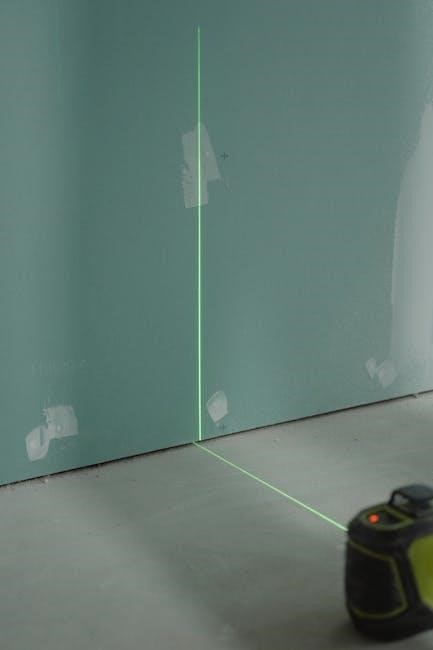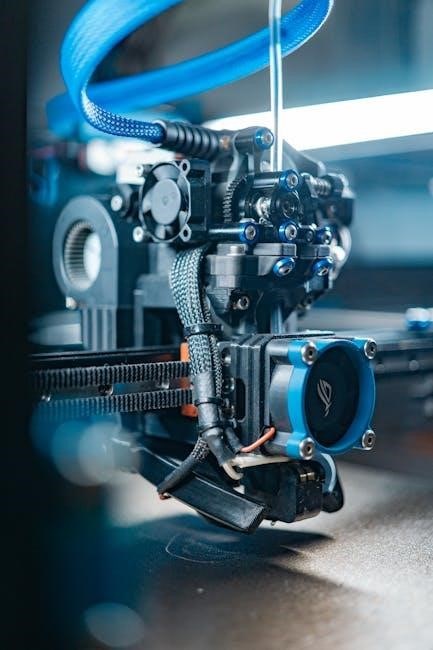confession orthodox guide

Orthodox confession is a sacred sacrament where believers confess their sins to a priest, seeking forgiveness and spiritual renewal. It is a vital practice for healing and drawing closer to God.
What is Orthodox Confession?
Orthodox confession is a sacrament in which believers openly acknowledge their sins before a priest, who acts as a witness of their repentance. It is a divine mystery through which God forgives sins, restores spiritual health, and strengthens the faithful in their journey toward salvation. Rooted in Scripture and tradition, confession involves heartfelt contrition, honest disclosure of sins, and a commitment to change. The priest, as a spiritual father, offers guidance, prayer, and absolution, reminding the penitent of God’s infinite mercy. This sacred practice fosters humility, healing, and reconciliation with God and His Church. Through confession, believers experience metanoia—a transformative change of heart—enabling them to live a life more deeply rooted in faith and love.

The Sacrament of Reconciliation in the Orthodox Church
The Sacrament of Reconciliation, or confession, is a sacred rite through which Orthodox Christians seek forgiveness for their sins and reconciliation with God and the Church. It is a mystery of healing, where believers acknowledge their shortcomings, express genuine remorse, and receive spiritual guidance from a priest. Unlike legalistic forms of confession, the Orthodox Church emphasizes the therapeutic nature of this sacrament, focusing on spiritual growth and renewal rather than punishment. The priest acts as a witness and a guide, offering prayers and words of encouragement to help the penitent return to a life of virtue and communion with God.
Through confession, the believer experiences the boundless mercy of Christ, who reconciles humanity to the Father. This sacrament strengthens the faithful in their struggle against sin and deepens their union with the Body of Christ, the Church.

Preparation for Confession
Preparation involves self-examination, prayer, and seeking the Holy Spirit’s guidance. Reflect on your sins, consider writing them down for clarity, and approach confession with honesty and openness.
Step-by-Step Guide to Preparing for Confession
Begin by praying for the Holy Spirit’s guidance to enlighten your conscience. Reflect on your thoughts, words, and actions, using the Ten Commandments and Beatitudes as a framework. Write down your sins to ensure clarity and honesty during confession. Consider ranking them by severity to better understand their impact. Examine specific areas of your life, such as relationships, habits, and priorities, to identify where you may have fallen short. Seek forgiveness from others if needed and resolve to make amends. Approach confession with sincerity, remembering that it is a dialogue with God through the priest. This preparation fosters humility, contrition, and a commitment to spiritual growth, making your confession meaningful and transformative.
Examination of Conscience: Reflecting on Your Sins
Examining your conscience involves prayerfully reflecting on your thoughts, words, and actions to identify sins. Use the Ten Commandments and Beatitudes as guides to evaluate where you have fallen short. Consider ranking sins by severity, from minor to serious, to better understand their impact. Ask yourself questions like, “Have I honored God and others?” or “Have I acted with love and humility?” This introspection helps uncover patterns of sin and areas needing repentance. Be honest with yourself, as this reflection is a dialogue with God. Write down specific sins to ensure clarity during confession. This step fosters humility, contrition, and a commitment to change, preparing you to approach the sacrament with sincerity and openness to spiritual healing.
Prayer and Seeking Guidance from the Holy Spirit
Prayer is essential for seeking the Holy Spirit’s guidance in preparing for confession. Begin by asking God to reveal your sins and grant you the grace to repent sincerely. Pray for humility and courage to confront your weaknesses. Reflect on your life, thoughts, and actions, inviting the Holy Spirit to illuminate areas where you have strayed from God’s will. This spiritual reflection helps you identify patterns of sin and understand the depth of your need for forgiveness. Prayer also fosters a contrite heart, which is vital for a meaningful confession. By seeking divine guidance, you open yourself to spiritual renewal and a deeper connection with God, ensuring your confession is honest and transformative;
Writing a List of Sins for Clarity
Writing a list of sins can aid in clarity and honesty during confession. It helps ensure that no significant offenses are overlooked, allowing for a more thorough examination of conscience. This practice encourages specificity, as you reflect on the nature and severity of each sin. Consider ranking sins on a scale to better understand their impact and prioritize deeper repentance for more serious transgressions. Use the Ten Commandments or Beatitudes as a guide to identify areas where you may have fallen short. While the list is a personal tool for preparation, it is not necessary to share every detail with the priest unless it provides context for understanding your spiritual state. The goal is to approach confession with clarity and sincerity, seeking healing and restoration through honest acknowledgment of your sins.

The Process of Confession
The Orthodox confession process involves entering the confessional, venerating icons, and honestly confessing sins to the priest, who acts as a spiritual guide offering absolution and guidance.
Entering the Confessional and Venerating Icons
Entering the confessional space begins with reverence and humility. The penitent approaches the icons, typically of Christ and the Virgin Mary, and performs a traditional veneration. This involves making the sign of the cross, bowing, and kissing the icons or the Gospel book placed nearby. These actions symbolize respect for the divine presence and humility before God. The confessional area is often adorned with sacred imagery to create an atmosphere of prayer and reflection. Venerating icons serves as a reminder of the sacred nature of the sacrament and the believer’s connection to the Orthodox faith. This act of devotion prepares the heart and mind for the confession that follows, fostering a spirit of repentance and openness to divine grace.
The Role of the Priest in Confession

In Orthodox confession, the priest serves as a spiritual father and a witness to the believer’s repentance. They act as a mediator between the penitent and God, ensuring confidentiality and offering guidance. The priest’s role is not to judge but to provide wisdom, comfort, and spiritual direction. They help the penitent understand the gravity of their sins and encourage genuine repentance. After the confession, the priest pronounces absolution, invoking God’s forgiveness and restoring the believer to communion with the Church. The priest may also assign penance, such as prayer or acts of charity, to aid in the penitent’s spiritual growth. Their presence embodies Christ’s mercy and reinforces the sacrament’s healing power, guiding the faithful toward a life of holiness and union with God.
Confessing Sins Honestly and Specifically

Confessing sins honestly and specifically is essential for a meaningful Orthodox confession. Believers are encouraged to avoid vague statements and instead detail their transgressions clearly. This ensures genuine repentance and accountability. The Orthodox Church teaches that confession should be thorough, reflecting on thoughts, words, and actions that have strayed from God’s will. Specificity helps the penitent confront their sins directly, fostering true contrition. It is also acceptable to use a written list to ensure no sin is overlooked. By naming sins without ambiguity, the faithful demonstrate sincerity and readiness to change. This practice, guided by the Ten Commandments and the Beatitudes, allows for a deeper examination of conscience and a more profound experience of God’s mercy and forgiveness.
The Priest’s Absolution and Words of Guidance
The priest’s absolution is a divine act of forgiveness, reflecting Christ’s authority to remit sins. After the penitent confesses their sins honestly, the priest offers prayerful words of absolution, declaring God’s mercy and pardon. This moment is a profound expression of God’s love and grace. The priest also provides spiritual guidance, offering advice or penance to aid the believer’s growth and healing. His words are not judgment but compassion, aimed at strengthening the faithful. The absolution restores the believer’s communion with God and the Church, while the guidance helps them walk the path of repentance and virtue. This sacramental encounter is a powerful reminder of God’s infinite forgiveness and the Church’s role in nurturing spiritual transformation.

Key Aspects of Orthodox Confession

Orthodox confession emphasizes contrition, repentance, and spiritual transformation. It is a sacrament of forgiveness, healing, and renewal, guided by the priest’s compassionate absolution and words of wisdom.
The Importance of Contrition and Sorrow
Contrition and sorrow are essential elements in Orthodox confession, reflecting a genuine remorse for one’s sins. This heartfelt repentance opens the door to divine forgiveness and healing. Sorrow for sin is not merely emotional but a conscious acknowledgment of one’s wrongdoing and a desire to amend; The Orthodox Church teaches that true contrition leads to a deeper reconciliation with God and strengthens the believer’s commitment to a virtuous life. Without sincere sorrow, confession becomes an empty ritual. The priest guides the penitent through this process, emphasizing the transformative power of repentance. By embracing contrition, believers experience spiritual renewal and a closer union with Christ. This contrition is a gift of the Holy Spirit, enabling individuals to humble themselves and seek mercy. It is the foundation upon which the sacrament of confession restores the soul and renews the heart.
Repentance and the Commitment to Change
Repentance is the cornerstone of Orthodox confession, requiring a firm commitment to change and turn away from sin. It involves a conscious decision to abandon sinful behaviors and embracing a life aligned with God’s will. True repentance is not merely a feeling but a resolve to act differently, guided by faith and the transformative power of the Holy Spirit. The Orthodox Church emphasizes that repentance is a continuous process, not a one-time event. It involves self-examination, prayer, and a sincere effort to live according to Christ’s teachings. This commitment to change is what makes confession meaningful, as it reflects a desire to grow spiritually and draw closer to God. By repenting, believers demonstrate their willingness to leave sin behind and walk the path of righteousness, with the priest offering guidance and support along the way. This journey of repentance is lifelong, rooted in humility and perseverance.
The Role of Metanoia in the Confession Process
Metanoia, meaning a transformative change of heart and mind, is central to Orthodox confession. It is not just a moment of regret but a profound spiritual awakening, urging believers to turn away from sin and toward God. This repentance involves a deep self-awareness and a sincere desire to change, guided by the Holy Spirit. Through metanoia, individuals recognize the gravity of their sins and seek a life of virtue and unity with Christ. The process of confession becomes a catalyst for this transformation, as the penitent openly acknowledges their wrongdoings and commits to spiritual growth. The priest, acting as a spiritual guide, helps the faithful navigate this journey, offering words of encouragement and absolution. Metanoia, therefore, is the heart of confession, enabling believers to embrace a life of repentance and renewal.

Guides for a Meaningful Confession
Prepare through prayer and self-examination, seeking honesty and sincerity. Use the Ten Commandments and Beatitudes as reflections. Approach with humility, ensuring clarity and completeness in your confession.
Using the Ten Commandments and Beatitudes for Self-Reflection
The Ten Commandments and the Beatitudes provide a foundational guide for self-reflection in preparation for confession. The Ten Commandments outline key areas where sin may occur, such as honoring God, respecting others, and avoiding harmful actions. Similarly, the Beatitudes offer principles for living a virtuous life, emphasizing humility, mercy, and peacemaking. By reflecting on these teachings, individuals can identify areas where they have fallen short and need repentance.
Using these tools, one can examine their thoughts, words, and actions. For instance, asking oneself, “Have I honored God above all else?” or “Have I shown compassion to others?” This process helps clarify sins and fosters a deeper understanding of one’s spiritual state. Writing down specific instances where these principles were not upheld can also aid in a more honest and meaningful confession. This method ensures that the confession is thorough and rooted in biblical and spiritual truths.
Understanding the Three Acts of the Penitent
The three acts of the penitent—contrition, confession, and satisfaction—are essential for a meaningful Orthodox confession. Contrition involves genuine sorrow for one’s sins, stemming from love for God and remorse for offending Him. Confession requires openly and honestly disclosing sins to the priest, acting as a spiritual father and witness to the penitent’s repentance. Satisfaction entails making amends through prayer, fasting, or other acts of penance, as directed by the priest, to repair the harm caused by sin and strengthen one’s commitment to change.
These acts reflect the Orthodox understanding of repentance as a holistic process of healing and restoration. By embracing these steps, the faithful demonstrate their desire to reconcile with God and live a life transformed by grace.
Practical Tips for Making a Good Confession
To make a meaningful confession, prepare by prayerfully examining your conscience, using the Ten Commandments or Beatitudes as a guide. Write a list of sins to ensure clarity and honesty. Approach the sacrament with contrition, sincerely regretting your actions and their offense to God. Be specific in confessing your sins, avoiding vague statements. Seek the priest’s guidance humbly and embrace any penance given as a means of healing. Remember, confession is not just about listing sins but about expressing a desire to change and grow spiritually. By being open and receptive, you can deepen your repentance and experience God’s mercy and grace more fully.

Life After Confession
After confession, believers experience spiritual renewal, embracing a life of repentance and faith. This journey fosters inner peace, healing, and a deeper connection with God.
Embracing Spiritual Growth and Renewal
After confession, the journey of spiritual growth and renewal begins. Believers are called to deepen their faith through prayer, self-reflection, and acts of love. This process, rooted in metanoia (a change of heart), helps individuals turn away from sin and toward God. By embracing humility and sincerity, one nurtures a closer relationship with Christ. The guidance of the priest and the support of the Church community play a crucial role in this transformation. regular prayer, reading of Scripture, and participation in sacraments further strengthen spiritual growth. The goal is to live a life of repentance, seeking constant improvement and drawing nearer to God’s will. This path leads to inner peace, healing, and a renewed sense of purpose, fostering a deeper connection with God and His divine love.
Living a Life of Repentance and Faith
Confession is a catalyst for living a life of repentance and faith. It calls believers to embrace a continuous journey of turning away from sin and toward God. True repentance involves heartfelt contrition and a commitment to change, not just a one-time act. Faith becomes the foundation, guiding believers through life’s challenges and strengthening their relationship with Christ. Living a life of repentance and faith means seeking forgiveness, learning from mistakes, and striving to follow God’s will. Prayer, self-reflection, and acts of love are essential practices that nurture spiritual growth. The support of the Church community and the priest’s guidance further empower this journey. By embracing repentance and faith, one experiences transformation, finding inner peace and drawing closer to God’s divine love and mercy.
The Journey Toward Inner Peace and Transformation
Confession is a profound journey toward inner peace and spiritual transformation. Through this sacrament, believers experience the cleansing of their souls and the renewal of their spirits. It is a path that leads to healing, restoration, and a deeper connection with God. By acknowledging and repenting of sins, individuals unburden their hearts, finding solace in God’s infinite mercy. This journey fosters a life of humility, love, and faith, guiding believers to live according to God’s will. The transformation is not just emotional but deeply spiritual, empowering one to embrace a life of virtue and harmony. As one progresses on this journey, they discover the peace that comes from being reconciled with God and His Church, ultimately fulfilling their purpose as children of God.





















































